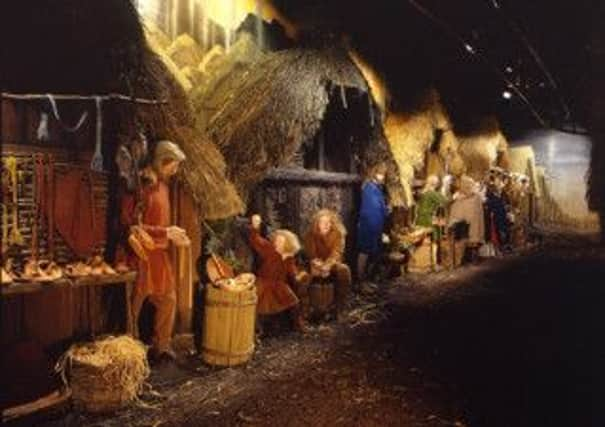Past and present of man who made a museum transformation


Just one hour in the company of John Sunderland is the equivalent of an entire day with most artists, as the 63 year-old leaps from one creative idea to another.
Sunderland may not be a household name, but his master work – the Jorvik experience in York – certainly is. Next April marks 30 years since the museum opened, during which time more than 16 million people have passed through its doors, and Sunderland’s new book Vikings in My Dustbin is being published ahead of this anniversary.
Advertisement
Hide AdAdvertisement
Hide AdThe book charts his life story, from a pupil skiving off school at Wakefield Grammar twice a week, to the man behind one of the most impressive visitor attractions in the country. Sunderland was branded a “thickie” by his own father and by the time he left school didn’t seem destined for great things.
The one thing he could do was draw. Art college beckoned, where he specialised in film and animation, and after graduating he scoured the local yellow pages in a bid to start a career as an industrial film-maker. By the mid-1970s, he was getting some work on cartoons, with little sign of breaking into the big time.
But then he got the break he was after. A new game show called 3-2-1 was being road-tested and Sunderland got the job of creating what became an iconic dustbin. The show, along with its host Ted Rogers were a big hit, and so, too, was Sunderland’s creation, Dusty Bin. Sunderland then met Mike Maloney, an independent filmmaker of natural history programmes and documentaries, who told him about a York Archaeological Trust (YAT) proposal to create a museum in York’s Coppergate. Sunderland was intrigued and “make museums like movies” became his mantra. He wanted to put museum visitors on the inside looking out rather than the other way round.
A meeting was arranged between the YAT and Sunderland, who produced drawings for the proposed museum, which proved popular with its director Peter Addyman. He was then given the job of designer. “My job was to bring Jorvik to life using only actual reconstruction, but there were no pre-existing rules for this kind of museum. That conferred a unique freedom on us,” Sunderland explains.
Advertisement
Hide AdAdvertisement
Hide AdThis was the early 1980s and there were no precedents for developing a project based on a ride system that carried a hundred people at a time. The YAT were insistent that only organic materials were to be used, with actual finds reflected. The end of the experience must be a conventional museum, they said. And positively no Disneyfication.
Now Sunderland’s creative thinking came to the fore. “The sense of ‘story’ was all important,” he says, “everyone relates to the structure that telling a story gives.” One important idea was the creation of a time bridge early in the ride, a place where disbelief could be suspended, as the visitor travelled back to a bygone era.
He wanted to make use of each visitor’s senses – not just sight, but sound, taste and smell too. To this extent, he saw the Jorvik experience as akin to a magic carpet ride, with details like a baby crying in one of the “built from scratch” daub and wattle houses.
“We did a lot of the work in a Wakefield warehouse and my remit to myself was to think like a movie director at every turn,” he says. Built on the site of the old Craven sweet factory, Jorvik employed a 62-track sound system that created a unique experience that continues to attract hordes of tourists today. But alongside all the innovations, there was another important masterstroke. “Landing Magnus Magnusson as the voice of Jorvik was a real coup. I was delighted with that.”
Advertisement
Hide AdAdvertisement
Hide AdThe visit of Prince Charles to Jorvik was a big coup for the museum. Keen to experience it like any other member of the public, the Prince and his entourage boarded their car only to disappear into the time tunnel and fail to come out on the other side. “We waited and waited and waited,” recalls Sunderland, “but we then had to face the fact that the Prince had become stuck in the 10th century,” he jokes.
The cars’ functioning had been disrupted by the severity of an overhead electric storm, producing a plethora of red faces among the Jorvik staff. Of course, good humour prevailed once the Prince returned to the present.
• John Sunderland’s memoir A Viking in my Dustbin is available to read online at www.redbubble.com